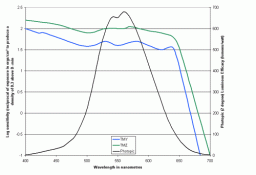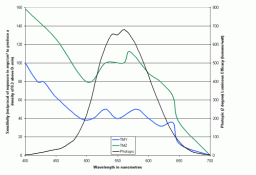Helen B
Member
Ted Harris said:I checked and actually the Mavolux measures down to the same 0.001 fc that theProfisix mesures .... but as I noted it is a harder meter to use and also costs more.
One more question here .... how important is this actually? Considering that a light meter is a reference tool only and when we are talking extremely long exposures a light meter goes from being a reference point to a broad guideline. Extremem low light exposure may jsut be oneof those areas where experience counts for as much as all the technology we can muster.
Yes, sorry Ted, my assumption was wrong. The Mavolux 5032 B is more sensitive than most other luxmeters in general use (later edit: wrong again! I was going from memory, always dangerous for me, and the number I thought of was in lux, not fc, dammit), and it costs about $1000 if anyone is interested. A calculator disc is available as an accessory for converting the measurements into photographic exposure. I totally agree about the usefulness of meter readings for photography at those levels.
Michael,
In practice, how important in photographic terms is the difference between the reading from a simple luxmeter like the Mavolux* and a photographic lightmeter? I wonder if, in many cases, the differences between the meter's spectral sensitivity and that of the particular film in use are greater than the difference between the spectral response of a luxmeter and that of photo lightmeters (which have a wide range of spectral responses).
Put another way: in many photographic applications, especially where we have calibrated our film/meter combination (which we will do in representative lighting conditions if we require accuracy), is the difference between the spectral response of a luxmeter and a photo lightmeter any more significant than the difference between different photo meters (which many people accept).
Re moonlight etc. Is it blue? It is 'less blue' than daylight - ie it has a lower colour temperature. Are our rods most sensitive to blue? Their peak sensitivity, according to the CIE standard spectral luminous efficiency function for scotopic vision, is at 507 nm. Wouldn't most people call that green?
Best,
Helen
*The Mavolux uses a colour corrected silicon photo diode, the colour correction being matched to the luminous efficiency function for photopic vision by the use of a filter, with different accuracies of match available. It does not apply photopic luminous efficiency functions to spectral data.
Last edited by a moderator:




